Planning your first trip to Japan?
It’s an exciting adventure—but let’s be honest, it can also feel a little overwhelming. From navigating the train system to knowing what to pack, Japan is full of surprises for first-time visitors.
This practical guide is here to help. As someone who’s explored Japan inside and out, I’ll share essential Japan travel tips to make your journey smooth, stress-free, and unforgettable.
We’ll cover itinerary planning, transportation hacks, budget advice, cultural etiquette, what to pack, and how to stay connected. Whether you’re dreaming of cherry blossoms in Kyoto or sushi in Tokyo, these tips will help you travel Japan with confidence.
Let’s dive in—here’s what you need to know before you go.
Planning Your Trip: Things to Know Before Going to Japan
Before you step off that plane and into the dazzling streets of Tokyo or Kyoto, there are a few things worth knowing. Japan is beautiful, efficient, and full of surprises—but it definitely rewards travelers who plan ahead.
Best Time to Visit Japan
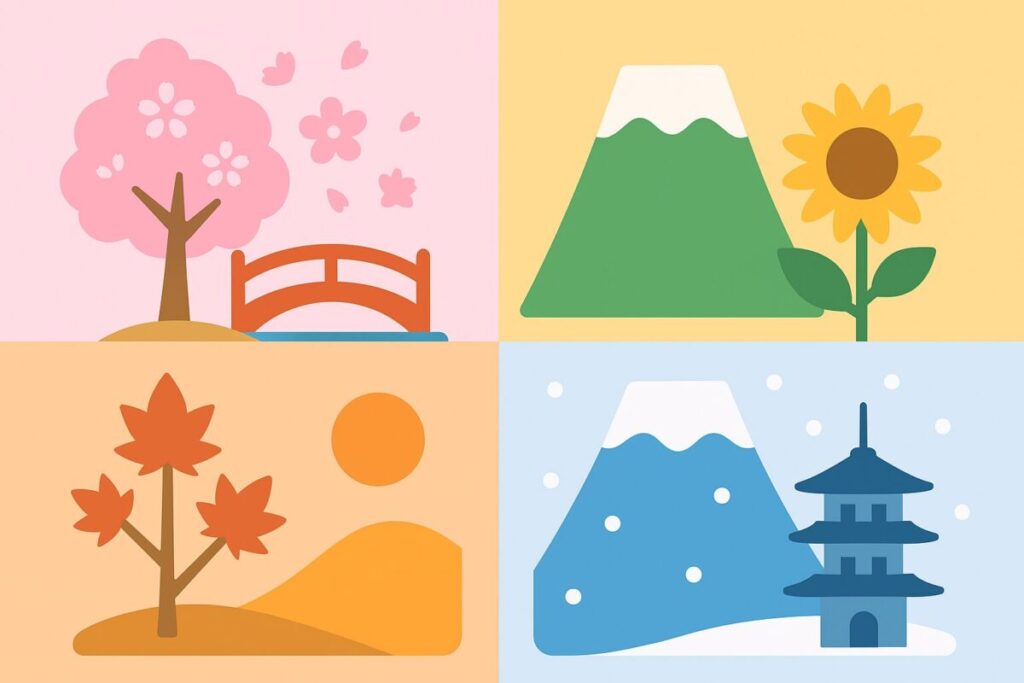
Japan is all about the seasons. Spring is famous for cherry blossoms, autumn for fiery red leaves.
These are peak travel times, which also means peak crowds and prices. If you’re hoping to visit during March–April or October–November, book your flights and hotels well in advance.
That said, Japan is worth visiting year-round. Here’s a quick comparison:
| Season | Highlights | Pros | Watch Out For |
|---|---|---|---|
| Spring | Cherry blossoms | Beautiful weather and scenery | Expensive, very crowded |
| Summer | Festivals, fireworks | Energetic and colorful | Hot, humid, occasional typhoons |
| Autumn | Fall foliage | Photogenic temples and gardens | Also very popular |
| Winter | Snow, onsen, skiing in Hokkaido | Fewer tourists, cheaper flights | Cold weather, early sunsets |
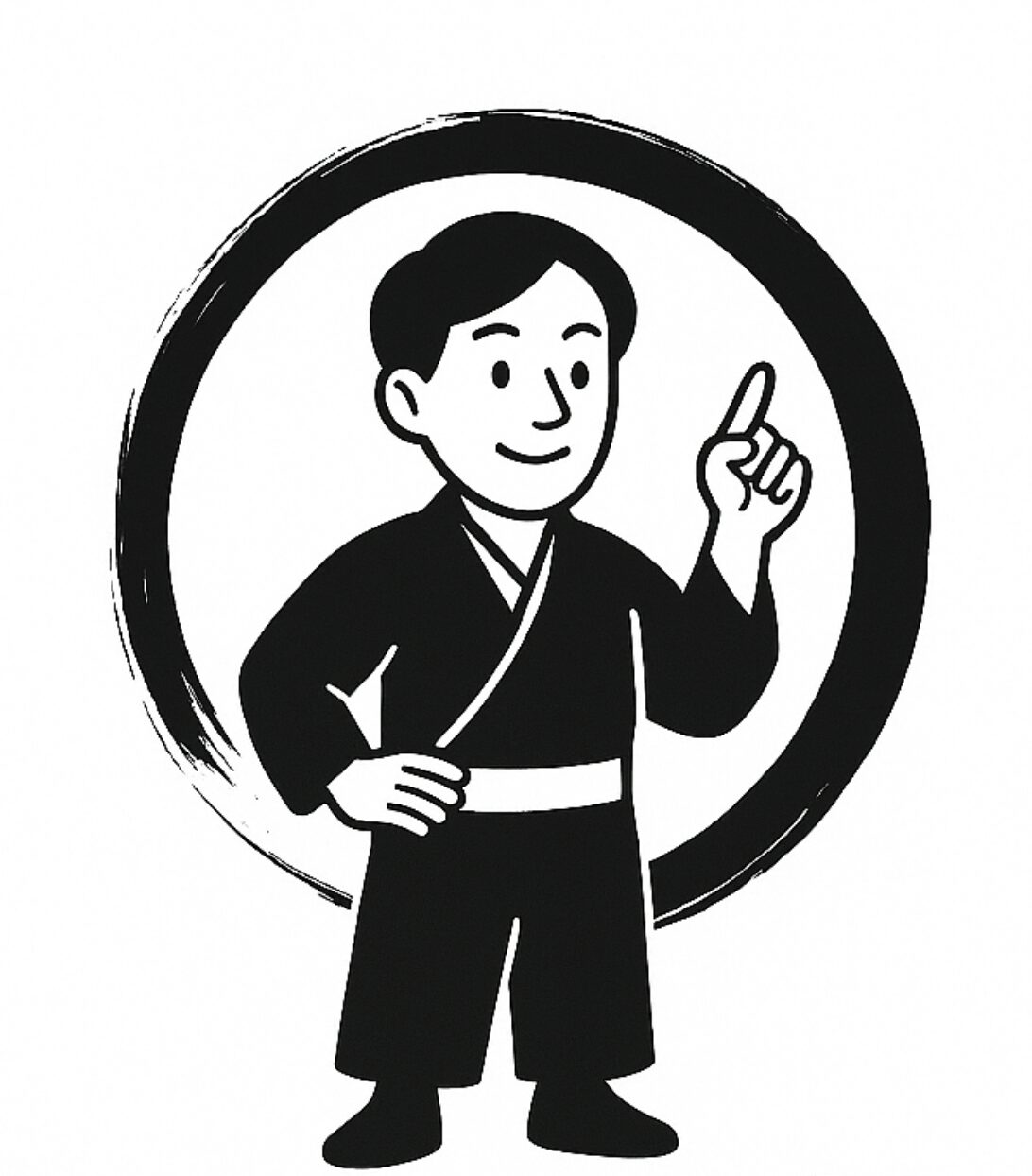 Flo
FloI usually avoid the absolute peak—late May or early December are perfect. Still gorgeous, way less hectic.
Visa and Entry Requirements
Most travelers from countries like the US, Canada, Australia, and much of Europe can enter Japan without a visa for up to 90 days.
Just check the official Japanese embassy website for your nationality before flying in.
- A valid passport (not expiring soon)
- A basic idea of your travel itinerary (it helps at immigration)
- Copies of your ID and travel insurance (just in case)



Keep your passport on you while in Japan. Police can ask to see it anytime—and yes, even if you’re just grabbing lunch.
Travel Insurance
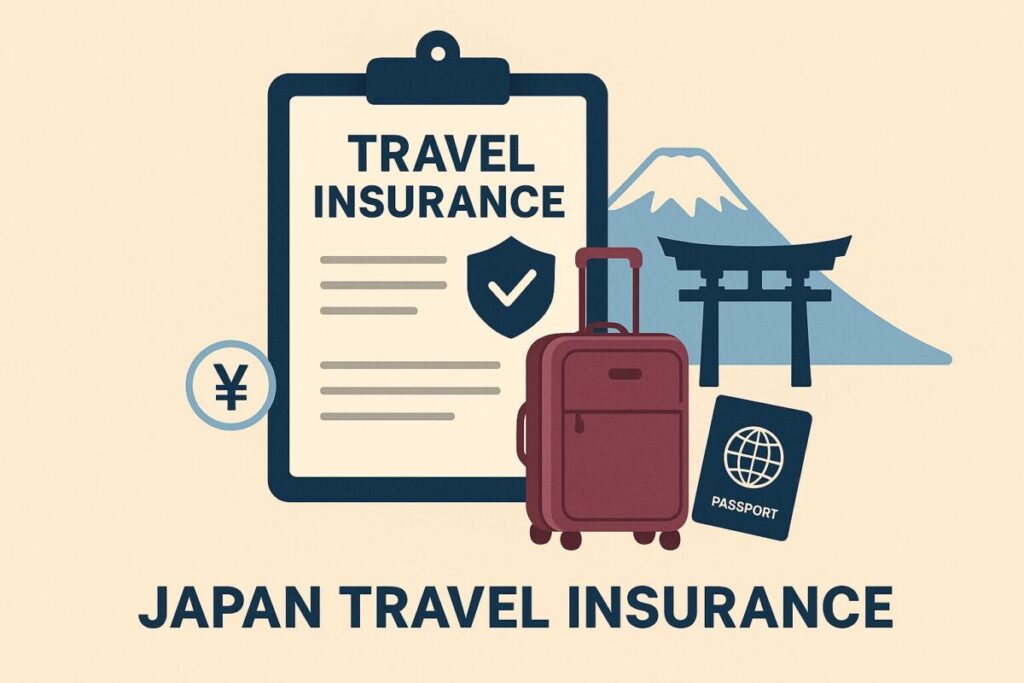

Technically, it’s not required. But skipping it?
Risky move. Japan’s hospitals are clean, efficient… and expensive if you’re not covered.
A decent travel insurance plan will help you out with:
- Medical emergencies
- Flight delays and cancellations
- Lost or stolen luggage
Even a minor injury can lead to hefty bills. I’ve seen people get caught off-guard with sprains or food poisoning and regret not getting coverage.



Once saw a tourist trip over temple steps—ambulance came quick, but the bill didn’t play nice. Travel insurance = cheap peace of mind.
Get Japan travel insurance with SafetyWing – easy, affordable, and covers medical emergencies
Itinerary Planning
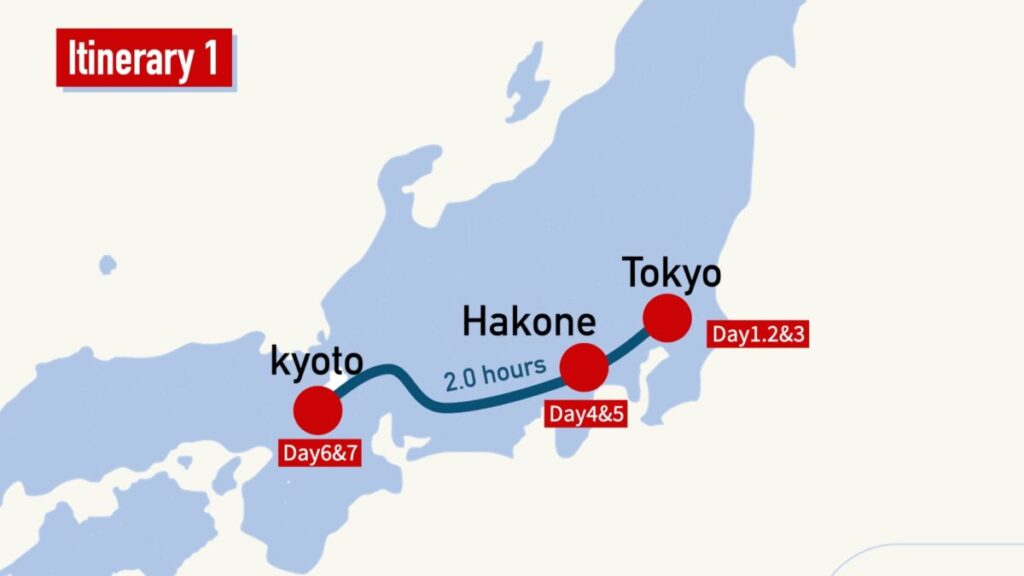

It’s tempting to go everywhere—Tokyo, Kyoto, Osaka, Nara, Hiroshima, Hokkaido—but Japan’s not as small as it looks. The trains are fast, sure. But between check-outs, transfers, and adjusting to a new city?
It adds up.
If it’s your first time, pick two major regions and stick with them. A good example: Tokyo + Kyoto. Want a side trip? Add Hakone, Kanazawa, or Nara depending on what excites you—nature, castles, temples, food.



Trying to see everything in one week usually ends with seeing nothing properly. Slower is better in Japan.
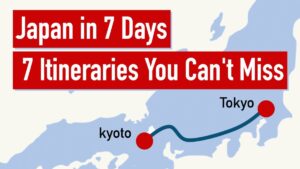

Japan Rail Pass: Worth It?
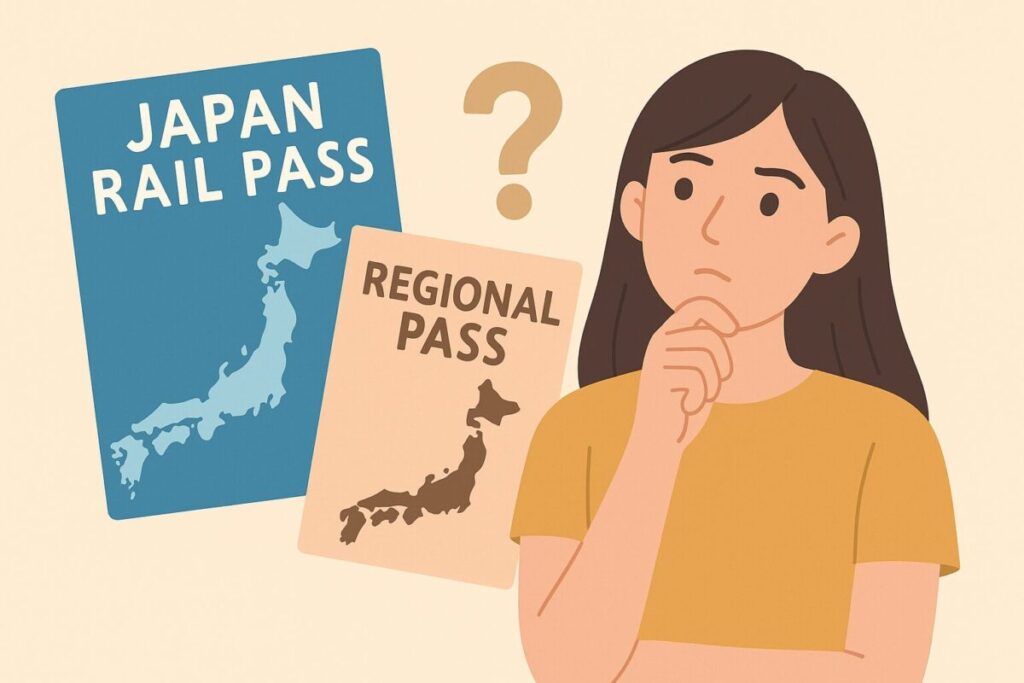

The JR Pass can be a great deal—or a total waste.
It depends entirely on your route.
| Pass Type | Valid For | Best For |
|---|---|---|
| Nationwide JR Pass | All JR trains including shinkansen | Multi-city long-distance trips (e.g., Tokyo–Kyoto–Hiroshima) |
| Regional JR Passes | Limited to areas like Kansai, Kanto, or Hokkaido | Staying within one region |
If your train fares exceed the pass cost, it’s worth it.
Otherwise, just buy individual tickets.



The nationwide pass is now more expensive than it used to be—don’t buy it unless you’ve run the numbers. Sites like Japan Guide or JR’s fare calculator help.
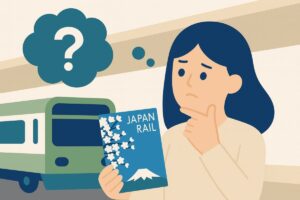

Staying Connected in Japan
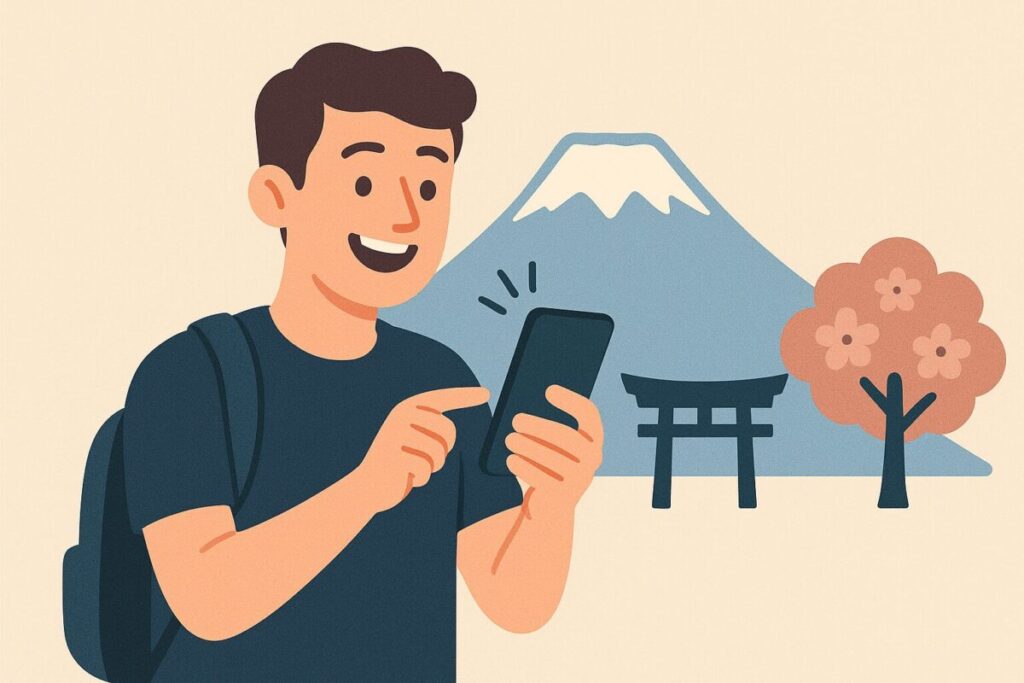

Japan is safe, but not always intuitive—especially if you can’t read kanji. Internet access makes life way easier.
Here’s how most travelers stay connected:
| Option | What It Is | Best For |
|---|---|---|
| Pocket Wi-Fi | Small mobile router (rentable) | Groups, multiple devices |
| Prepaid SIM/eSIM | Data-only SIM for your phone | Solo travelers, simple setup |
Both can be picked up at the airport or delivered to your hotel. Having Google Maps and a translation app ready is a huge help.



If you’re heading to the countryside, download offline maps before you go. Not all train stations have Wi-Fi or English signage.
Language Prep


In big cities, English is common on signs and train stations. But outside of Tokyo, don’t count on it.
Install Google Translate and download Japanese for offline use.
It won’t be perfect, but it’ll get the job done. And locals always appreciate a little effort.
- ありがとう (arigatou) – thank you
- すみません (sumimasen) – excuse me / sorry
- どこですか? (doko desu ka?) – where is…?
- 英語を話せますか? (eigo o hanasemasu ka?) – do you speak English?



Always carry your hotel address written in Japanese. Just hand it to a taxi driver or station staff—saves you a ton of explaining.
Transportation: How to Get Around Japan
Getting around Japan isn’t just easy—it’s part of the experience. The trains are fast, spotless, and shockingly punctual. Subways run like clockwork. Even local buses show up on time.
But there are a few things that’ll make your life a whole lot easier if you know them in advance.
Trains and Subways: Fast, Clean, Reliable
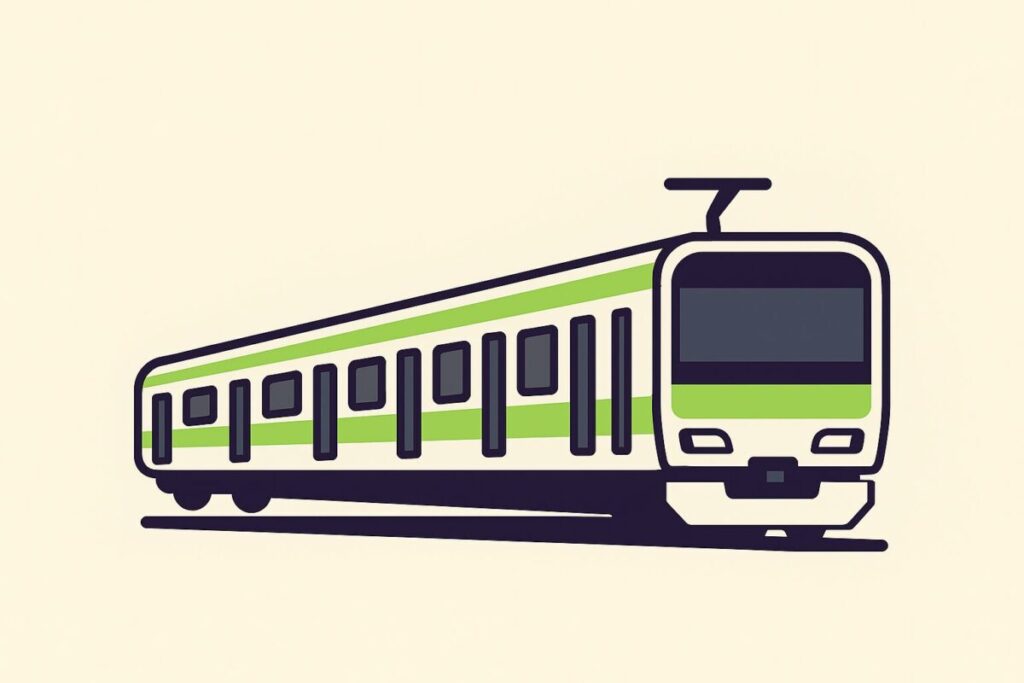

Japan’s train network is world-class. Shinkansen (bullet trains) connect major cities across the country, while subways and local trains cover every corner of the urban sprawl.
Whether you’re heading to Kyoto or just hopping between Tokyo neighborhoods, trains are your best friend.
Download Google Maps before your trip—it’s incredibly accurate in Japan, giving you live routes, platform info, and even which train car to board for the smoothest transfer.



Don’t stress about memorizing subway lines. Google Maps handles it all. Just follow the signs and the arrows—it’s a lot easier than it looks.
JR Pass vs IC Cards: What You Really Need
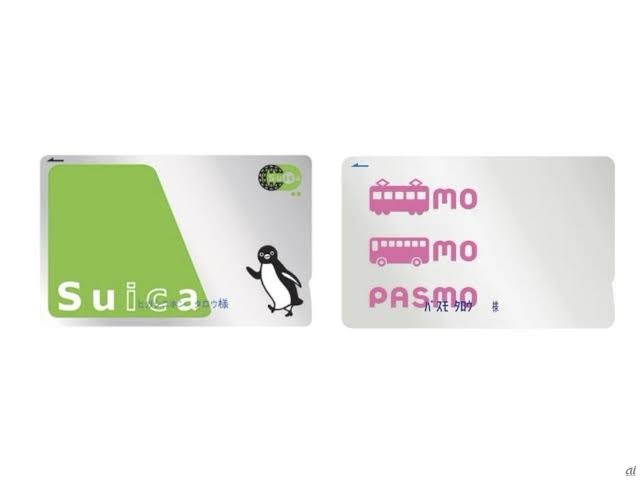

You’ve got two main tools when it comes to getting around by rail: the Japan Rail Pass (JR Pass) and IC cards like Suica or Pasmo.
| Option | What It Covers | Best For |
|---|---|---|
| JR Pass | Unlimited rides on most JR trains, including Shinkansen | Multi-city travel across Japan |
| IC Card (Suica/Pasmo) | Tap-in/tap-out on subways, trains, buses, even vending machines | Daily transit within cities |
- JR Pass is ideal if you’re taking long-distance trips (e.g., Tokyo → Kyoto → Hiroshima).
Buy it before arriving in Japan, then activate it at any major JR station. - IC cards are reloadable and super convenient. They work across most public transit systems and even at convenience stores and vending machines.



Use your Suica to buy coffee from a vending machine—just tap and go. Weirdly satisfying every time.
Train Etiquette and Rush Hour Warnings
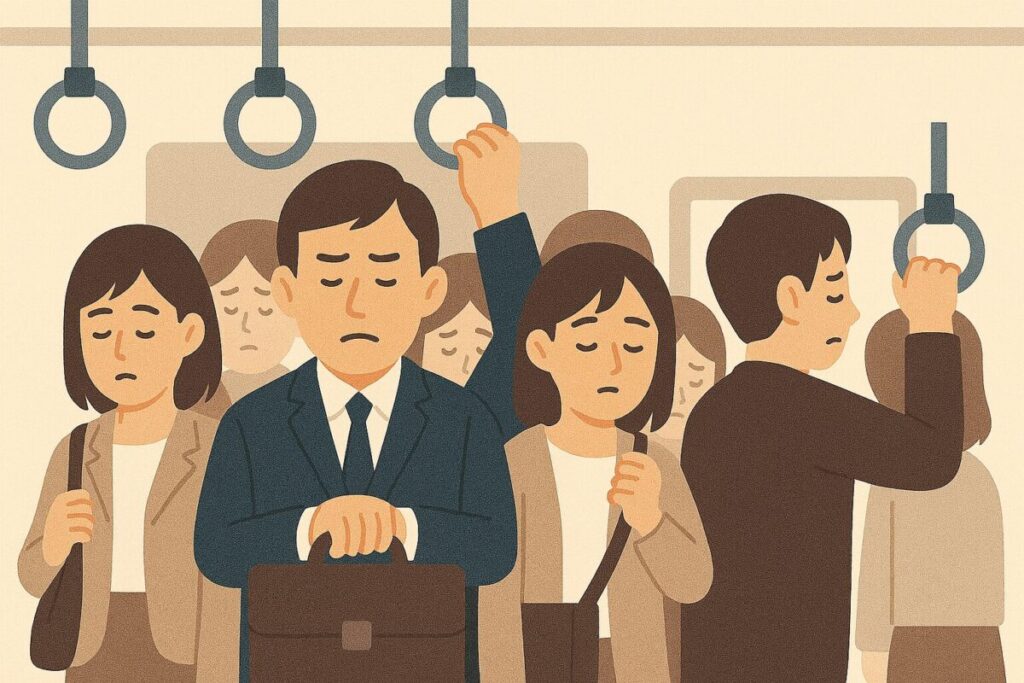

Japanese trains are famously polite and quiet. And during rush hour?
They’re packed.
- Rush hours: 7–9 AM and 5–7 PM on weekdays
- Etiquette: Keep your phone on silent. Don’t talk loudly. Never eat or drink on local trains (but it’s fine on the Shinkansen).
If you can, avoid peak times, especially with luggage. You can ride during rush hour, but “sardine can” isn’t an exaggeration.



Tokyo rush hour is wild. Do it once for the story, then never again. Plan mid-morning departures if you want personal space.
Buses and Night Travel


While trains dominate, buses fill in the gaps—especially in rural areas or cities without extensive rail networks.
- Long-distance buses (like Willer Express or JR Bus) are a budget-friendly alternative to Shinkansen.
Overnight buses are popular with backpackers and save on a night’s hotel. - City buses are reliable but sometimes lack English signage. Google Maps helps here, too.



Taking an overnight bus? Bring a neck pillow, earplugs, and low expectations. It’s not glamorous, but it works.
Driving in Japan: Freedom Comes with Conditions


Renting a car is a great way to explore rural Japan—mountains, coastlines, hidden onsen towns. But in big cities? Not worth it.
Here’s what you need to know if you’re driving:
- Japan drives on the left.
- Speed limits: 50–60 km/h in cities, 80–100 km/h on highways
- You’ll need an International Driving Permit (IDP)—get one in your home country before your trip.
- Most rental cars come with built-in GPS, but using Google Maps or NAVITIME (in English) is easier.
- Ask for a “Foreigner Driver” sticker—it lets locals know to give you space.



Driving in the countryside is peaceful and fun. Driving in Tokyo? That’s just stress with a steering wheel. Stick to trains in the city.
Money, Costs, and Payments
Japan is modern and high-tech in many ways—but when it comes to money?
It’s still surprisingly old-school.
Here’s what you need to know to keep your trip smooth and stress-free.
Currency: The Yen (¥)


Japan uses the Japanese Yen (JPY), and while cashless options are growing, cash is still king—especially outside major cities.
You’ll find ATMs that accept foreign cards at:
- 7-Eleven
- Lawson
- Japan Post offices
- Family mart
Airport exchange counters are fine for emergencies, but you’ll usually get a better rate using ATMs once you arrive.
Don’t just carry 10,000 yen bills—make sure you have plenty of 1,000 yen bills too. A lot of places won’t accept large bills.



Keep a stash of small bills and coins. You’ll need them for things like temple offerings, coin lockers, and even ramen machines.
Credit Cards and Cash Use
| Payment Method | Where It Works | Notes |
|---|---|---|
| Credit cards | Hotels, department stores, mid-range restaurants | Visa and Mastercard preferred |
| Cash | Small restaurants, shrines, rural areas | Still essential in many places |
| IC Cards (Suica, Pasmo) | Trains, buses, vending machines, convenience stores | Handy but not accepted everywhere |
You can definitely use your credit card in cities—but don’t assume it’ll work everywhere. Always carry at least ¥10,000 in cash (about $65 USD) just in case.



I’ve been in restaurants where cards “should” be accepted… but the machine “wasn’t working today.” Cash always wins.
Tipping: Don’t Do It


Japan has a no-tipping culture.
- No tips for taxi drivers
- No tips at restaurants
- No tips for hotel staff
In fact, trying to tip might actually confuse or embarrass the person you’re giving it to.
If you want to show appreciation, a simple thank you (“arigatou gozaimasu”) or a bow is more than enough.



You’ll love how smooth this is—no mental math, no awkward moments, no tip jars.
Daily Budget Tips
Japan isn’t cheap—but it’s not a wallet killer either. You can spend big on sushi and hotels, or keep things simple and still eat well.
Example daily travel budgets (per person):
| Budget Type | What It Gets You | Approx. Daily Cost |
|---|---|---|
| Low-budget | Convenience store meals, hostel, public transport | ¥6,000–¥9,000 |
| Mid-range | Casual restaurants, business hotel, JR/local trains | ¥12,000–¥20,000 |
| High-end | Kaiseki dinners, nice ryokan, private transport | ¥30,000+ |
Meals from 7-Eleven or FamilyMart are surprisingly tasty, and many local food stalls or set-meal shops (called teishoku-ya) offer full meals for under ¥1,000.
Meals from 7-Eleven or FamilyMart are surprisingly tasty—try the egg salad sandwich or a warm karaage bento.
And if you want a sit-down meal, many local food stalls or set-meal shops (called teishoku-ya) offer hearty meals for under ¥1,000.
Look for places serving gyoza with rice, saba (grilled mackerel) teishoku, or katsu-don—they’re affordable, filling, and genuinely delicious.



You can eat like a king at a local izakaya for ¥2,500. But ¥300 onigiri and ¥500 udon also slap, especially after a long day of walking.
Reminder: Japan Rail Pass Is Prepaid
If you’ve already decided to get a Japan Rail Pass,
remember:
- It must be purchased before you arrive in Japan (you can’t buy it inside the country)
- Use it as much as possible to get full value—ride the Shinkansen, local JR trains, even some ferries



Activate your JR Pass as soon as you need it—not necessarily on Day 1. It runs on consecutive days, so don’t waste time if you’re just staying in Tokyo at the start.
Staying Connected and Communicating
In Japan, staying online makes everything easier—train schedules, navigation, translations, even ordering ramen at a touchscreen kiosk.
Fortunately, it’s easy to stay connected throughout your trip with the right setup.
Pocket Wi-Fi vs SIM Cards
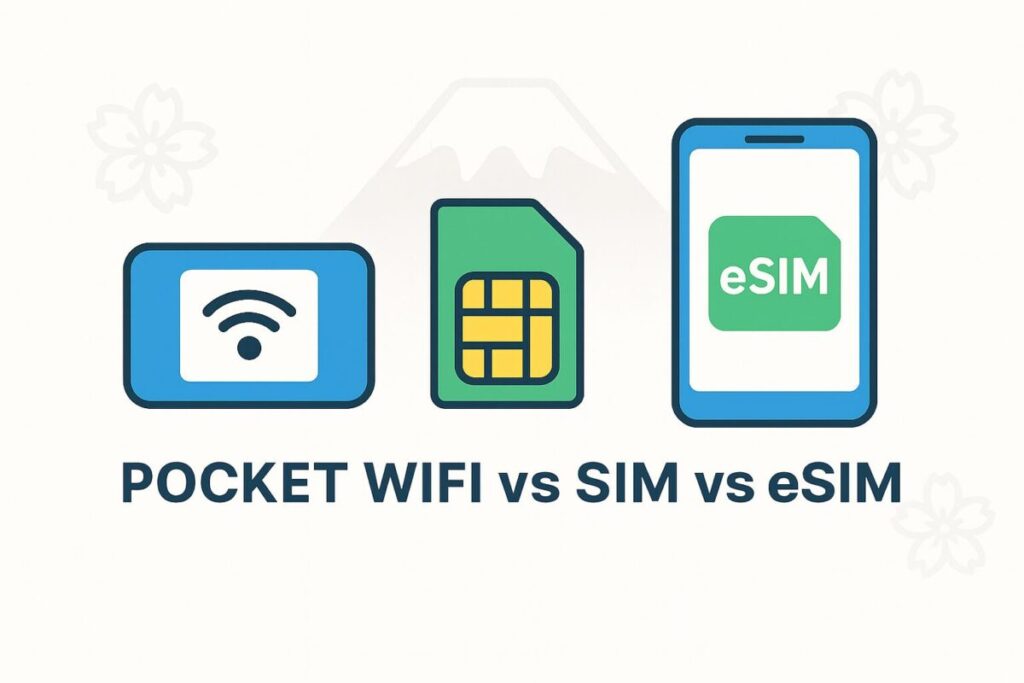

Two main options for mobile internet access in Japan are pocket Wi-Fi and prepaid SIM or eSIM cards. Both are reliable—just choose what fits your travel style.
| Option | Pros | Best For |
|---|---|---|
| Pocket Wi-Fi | Unlimited data, can connect multiple devices | Groups, couples, heavy users |
| Prepaid SIM/eSIM | Simple, no device to carry | Solo travelers, light users |
- Pocket Wi-Fi devices can be picked up at the airport or delivered to your hotel.
- Providers like Ninja WiFi and Global Advanced are popular and foreigner-friendly.
- SIM cards or eSIMs can be found at electronics stores, airports, or ordered online in advance.



Pocket Wi-Fi is my go-to. You can drop it in your bag and stay connected everywhere—even on mountain trains or in remote onsen towns.
👉 Rent Pocket Wi-Fi here on Klook – ideal for groups or couples
👉 Prepaid SIM card rental – great for solo travelers
👉 Instant Japan eSIM – no physical SIM needed
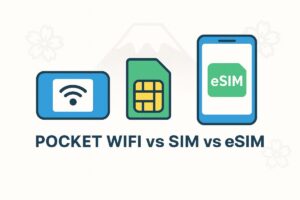

Must-Have Apps
Japan is super connected, but English support can be spotty.
These apps will make your trip smoother, faster, and way less confusing:
- Google Maps – still the best for walking and public transit navigation
- Navitime (Japan Travel app) – local-friendly, includes train car info and platform data
- HyperDia or Jorudan – precise train route planning
- Google Translate – download Japanese for offline use
- Currency converter app – helpful for budgeting when prices are all in ¥



Google Translate’s camera function can read signs and menus instantly—just point and scan. It’s magic for those handwritten izakaya menus.
Language and Communication
In big cities, you’ll find plenty of English signage—especially at train stations, airports, and major tourist spots.
But once you go rural, English becomes rare.
The good news? Japanese people are generally helpful, even if communication is limited. And small efforts go a long way.
- Konnichiwa (こんにちは) – Hello
- Sumimasen (すみません) – Excuse me / Sorry
- Arigatou gozaimasu (ありがとうございます) – Thank you
- Eigo o hanasemasu ka? (英語を話せますか?) – Do you speak English?



Write down your hotel name and address in Japanese on paper or screenshot it.
That one move can save you in a taxi, at a train station, or when asking for help.
Japanese Etiquette and Cultural Tips
Social harmony and unspoken rules shape daily life, so understanding a few basics will make your trip smoother (and win you a lot of goodwill).
Respect Local Customs
Japanese people are generally polite, modest, and observant—and they appreciate it when visitors follow suit. One of the first things you’ll notice: shoes come off a lot.
- Always remove your shoes before entering a home, certain ryokans (traditional inns), and some restaurants, temples, and even fitting rooms.
- Look for a raised floor or shoe rack—that’s your cue.



If they give you slippers, wear them—but never step into the restroom with them. Most places will have separate toilet slippers for that.
Quiet Public Behavior
Japanese public spaces are calm—even in the middle of Tokyo.
- Keep your voice down on trains, buses, and in waiting areas.
- Line up neatly at train platforms, elevators, and counters.
- On escalators: stand left and walk right in Tokyo, stand right and walk left in Osaka.



Don’t stop in the middle of the sidewalk to check your phone. Step to the side—you’ll blend in better and avoid getting bumped.
No Eating or Drinking on Local Trains


You can eat on long-distance trains like the Shinkansen, and there are even special lunch boxes (ekiben) sold for the ride. But on local and commuter trains, eating is frowned upon.
- Eat beforehand or on the platform if benches are provided.
- Trash cans are rare, especially on the street. Most are near restrooms or vending machines.
One thing to seriously keep in mind: trash cans are really hard to find in Japan.
You’ll often end up carrying your garbage around for hours. Most public bins are only at convenience stores—so don’t expect to find them at parks, train stations, or even tourist spots.



Carry a small plastic bag for your trash. It’ll save you when you’re holding an empty coffee can for two hours looking for a bin.
Shoes, Sinks, and Onsen Manners


Japan’s restrooms are clean—but often lack soap or towels. Locals bring their own small hand towel or use tissues.
At hot spring baths (onsen), etiquette matters a lot:
- No tattoos are allowed at many traditional onsens (some now have tattoo-friendly hours or private baths).
- No swimwear allowed.
- Always wash thoroughly at the shower stations before entering the bath.



Onsen are amazing, but you can’t just cannonball in. Sit down, rinse, then soak. It’s sacred space, not a pool party.
If you’re shy about bathing with others, don’t worry—private onsen (kashikiri onsen) are a great option.
These are hot springs you can book just for yourself or your travel partner, so you can soak in peace without any awkwardness. Many ryokan offer them, and even some public bathhouses have private rooms available by the hour.
It’s perfect for first-timers, couples, or anyone who wants to enjoy the onsen experience more comfortably.


Bowing and Basic Manners
Politeness is woven into daily life in Japan. A simple bow or nod when saying thank you or asking for help goes a long way.
- “Oishii” (美味しい) – Delicious!
- “Sumimasen” (すみません) – Excuse me / Sorry to bother you
- “Arigatou gozaimasu” (ありがとうございます) – Thank you
If you need help, politely approach staff or even a police officer (they’re super helpful) and start with “sumimasen.” Most people will try hard to assist, even with limited English.



No one expects perfect Japanese. But if you show a little effort, people will go out of their way to help you.
Photography Do’s and Don’ts
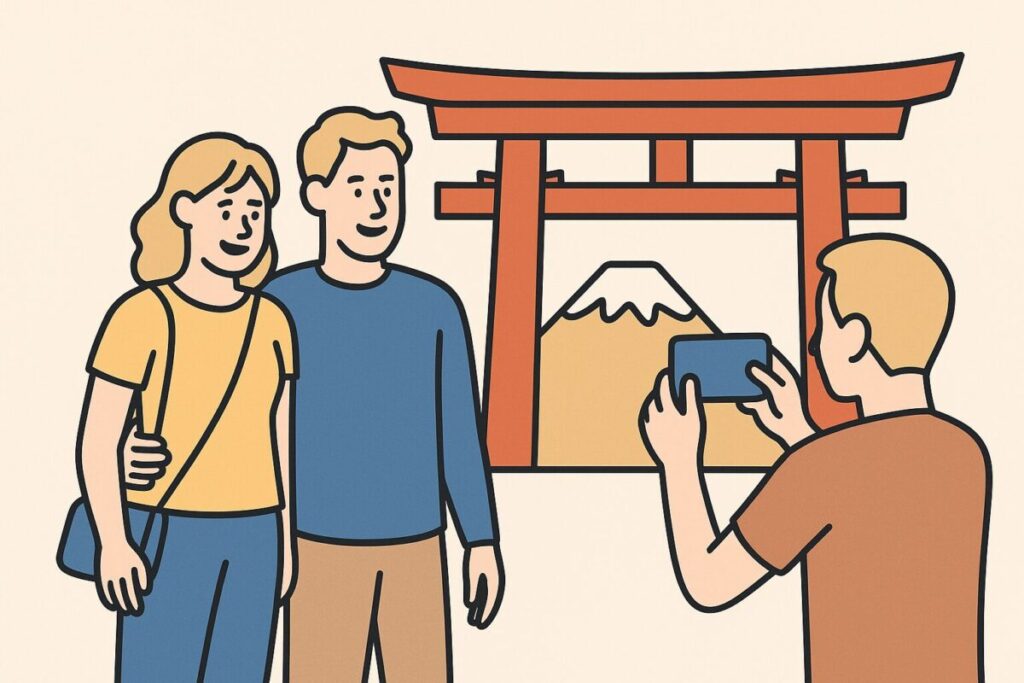

- It’s usually fine to take photos of public spaces and landmarks.
- Always ask before photographing people up close—especially children or anyone in traditional dress.
- Many temples and shrines allow photos outside, but not inside the main halls. Look for signs.



If you’re unsure, don’t assume. Watch what others are doing or just ask. A small gesture of respect = big difference.
Packing Tips: What to Bring
Packing for Japan isn’t about bringing more—it’s about bringing smart.
Weather shifts, social norms, and on-the-go convenience mean a little planning goes a long way.
Clothing: Prepare for the Season—and the Walking
Japan’s weather changes drastically by season, so layers are your best friend.
| Season | What to Expect | What to Pack |
|---|---|---|
| Summer (Jul–Aug) | Hot, humid, sudden rain | Light clothes, breathable fabrics, umbrella |
| Winter (Dec–Feb) | Cold in most regions, snow in the north | Coat, gloves, thermal layers |
| Spring/Autumn | Mild but changeable | Light jacket, raincoat |
And whatever the season—comfortable walking shoes are essential. Japan is a walk-heavy country, from temple steps to cobblestone side streets.



Don’t bring new shoes. I’ve had friends tap out after Day 2 because they packed style over comfort.
Electricals: Charging Up in Japan
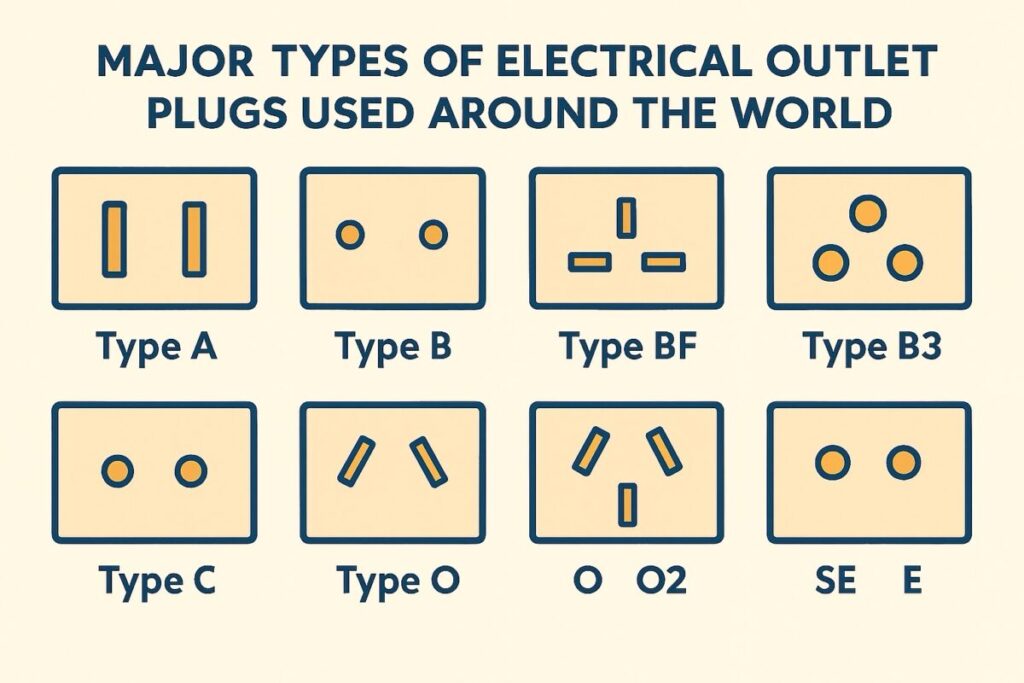

Japan uses Type A/B plugs (same as North America) with a 100V supply. Most modern devices like phones and laptops are dual-voltage, but check before you plug in.
- Universal plug adapter (if you’re not from the US/Canada)
- Voltage converter (only if your device isn’t dual-voltage)
- Charging cables
- Portable battery pack (for long days with few outlets)



You won’t always find plugs in cafés or trains—especially outside the big cities. That portable battery? It’s gold.
Travel Essentials
A few items will make daily life much easier:
- Prescription medications in original packaging
- Painkillers, cold meds, motion sickness pills (Japanese brands exist, but English labeling can be hit or miss)
- Small first-aid kit
- Photocopy or digital image of your passport
- Travel wallet for cash, cards, and your JR Pass
- Daypack or lightweight backpack for exploring



Japan’s convenience stores are lifesavers—but not pharmacies. Bring the basics from home to avoid decoding kanji on cold medicine boxes.
Cultural & Practical Add-ons
If you’re visiting shrines, temples, or traditional inns, a few extra items show cultural awareness:
- Scarf or shawl – useful for covering shoulders at religious sites
- Below-the-knee pants or skirt – respectful dress for temples
- Small quick-dry towel – for sweat, spills, or wiping your hands
- Reusable bag – many Japanese stores charge for plastic bags
- Trash bag (“manner bag”) – Japan has very few public bins



Onsen provide washcloths (tenugui), but they’re not for drying off. Keep a small towel in your bag, especially in summer when the humidity hits.
Shopping Space and Souvenir Strategy
Planning to shop? You probably are.
- Leave space in your suitcase, or
- Use delivery services offered by many stores to ship items home
- Pack a foldable bag for daily carry and overflow



Japanese wrapping is next-level beautiful—but bulky. If you’re buying gifts, unwrap them before packing or your luggage won’t shut.
Staying Safe in Japan
Japan consistently ranks among the safest countries in the world.
Crime rates are low, public spaces are secure, and people often go out of their way to help travelers. That said, every trip is better with a bit of smart preparation.
General Safety and Crime
The U.S. State Department currently rates Japan at Level 1: Exercise normal precautions—the lowest risk category. Violent crime is extremely rare. The most common issues are petty:
- Pickpocketing
- Bag snatching in busy places like major stations or festivals
Use basic common sense—especially in crowded tourist spots, and you’ll be just fine.



It’s not unusual to see people leave wallets or phones on café tables to reserve a seat. Amazing? Yes. Should you do that as a tourist? Maybe not.
Emergency Numbers (Save These)
| Situation | Number | Who You’ll Reach |
|---|---|---|
| Police | 110 | Report theft, harassment, etc. |
| Fire/Ambulance | 119 | Medical emergencies, fire |
Also: save your travel insurance emergency contact and keep it written down as backup.
Nighttime Safety


Yes, it’s generally safe to walk at night—even solo. Japanese cities are well-lit, and locals are often out late due to long work hours or night shopping.
But as always:
- Stick to well-lit streets
- Avoid excessive drinking, especially in nightlife areas like Shinjuku or Dotonbori
- If someone is acting aggressive or makes you uncomfortable, just walk away or head into a convenience store—they’re open late and staff can assist



Even in Tokyo at 1AM, I’ve walked home with zero stress. But I still trust my gut—if an alley looks sketchy, I avoid it. You should too.
Natural Disasters
Japan sits on the Pacific Ring of Fire, so earthquakes, typhoons, and occasional volcanic activity are part of the natural landscape. Fortunately, buildings and infrastructure are built to strict safety standards.
What to know:
- In an earthquake, drop to the floor, cover your head, and hold on. Stay inside if possible.
- For typhoons, avoid coastal areas and check local news or hotel updates
- Download NHK World app or Japan Meteorological Agency app for real-time English alerts



Earthquakes can happen anytime, but most are harmless tremors. Locals barely blink. If you’re unsure what to do—ask your hotel staff. They’re trained for it.
Smart Precautions for Travelers
Here are a few extra tips for peace of mind:
- Register your trip with your embassy if they offer the service
- Carry your passport or a photocopy (it’s legally required, and useful)
- Bring a small flashlight or headlamp—useful in blackouts (rare) or hiking
- Trust your instincts—if something feels off, seek help from police or staff



Police boxes (called koban) are everywhere and super approachable. Don’t hesitate to ask for help—they’re used to it, and they’re often surprisingly friendly.
Recommended Travel Products & Services
Planning ahead and booking the right tools can make your trip to Japan smoother, cheaper, and way more enjoyable.
These are the products and services I personally recommend to first-time travelers—and why they’re worth it.
Japan Rail Pass (JR Pass)
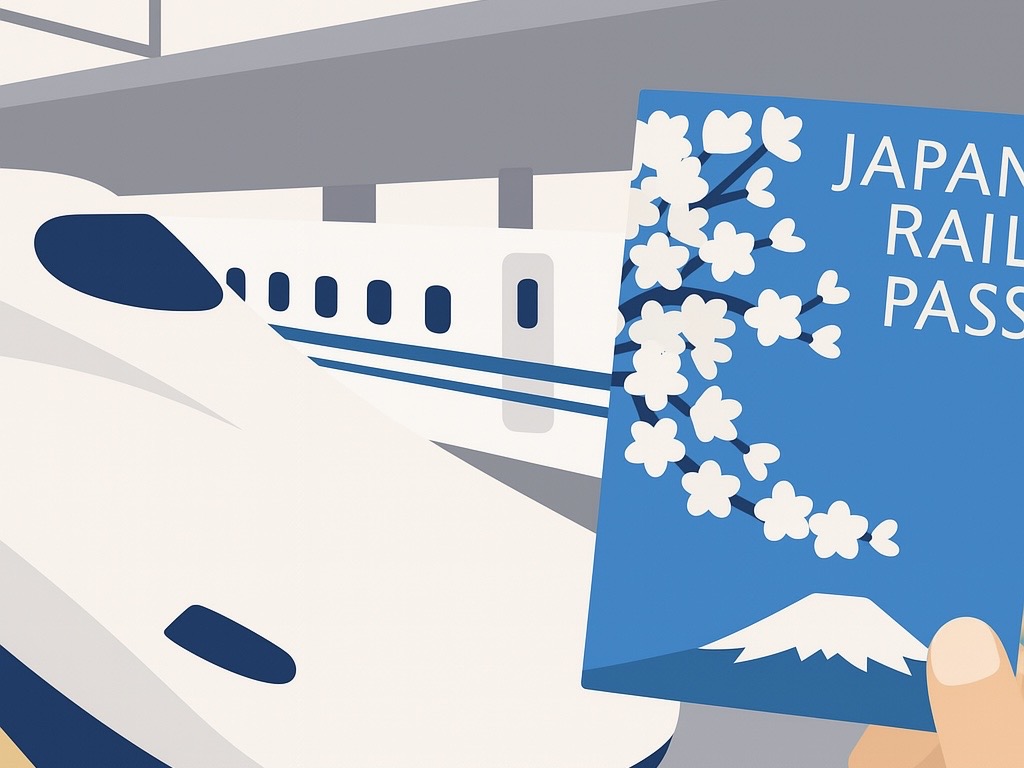

If you’re visiting more than one region, the JR Pass is often a great deal.
It gives you unlimited rides on JR trains, including most Shinkansen (bullet trains), for a set number of days (7, 14, or 21).
- Saves money on long-distance train fares (e.g., Tokyo–Kyoto–Hiroshima)
- Skip the ticket machines—just show the pass at the gate
- Covers local JR lines, the Narita Express, and even the Tokyo Monorail



If you’re sticking to Tokyo and Kyoto only, run the numbers first—regional passes or single tickets might be cheaper.
👉 Book your Japan Rail Pass via Klook – quick, official, and easy to use.


Pocket Wi-Fi or SIM Cards


Staying connected in Japan makes everything easier—train schedules, translations, bookings, and even just finding your hotel after dark.
That’s why it’s essential to bring either a pocket Wi-Fi or a prepaid SIM/eSIM. Both are reliable. The right one just depends on how you travel.
| Option | Pros | Best For |
|---|---|---|
| Pocket Wi-Fi | Unlimited data, can connect multiple devices | Groups, couples, heavy users |
| Prepaid SIM/eSIM | Simple, no device to carry | Solo travelers, light users |
Pocket Wi-Fi can be reserved in advance and picked up at the airport or delivered to your hotel.
Top providers like Ninja WiFi and Global Advanced offer great coverage and English support.
SIM/eSIM cards are easy to order online or pick up at major airports or electronics stores.



Honestly, you’ll want one or the other. Japan has patchy free Wi-Fi, especially outside cities—and trains usually don’t offer any at all.
👉 Rent Pocket Wi-Fi here on Klook – ideal for groups or couples
👉 Prepaid SIM card rental – great for solo travelers
👉 Instant Japan eSIM – no physical SIM needed
Guided Cultural Tours
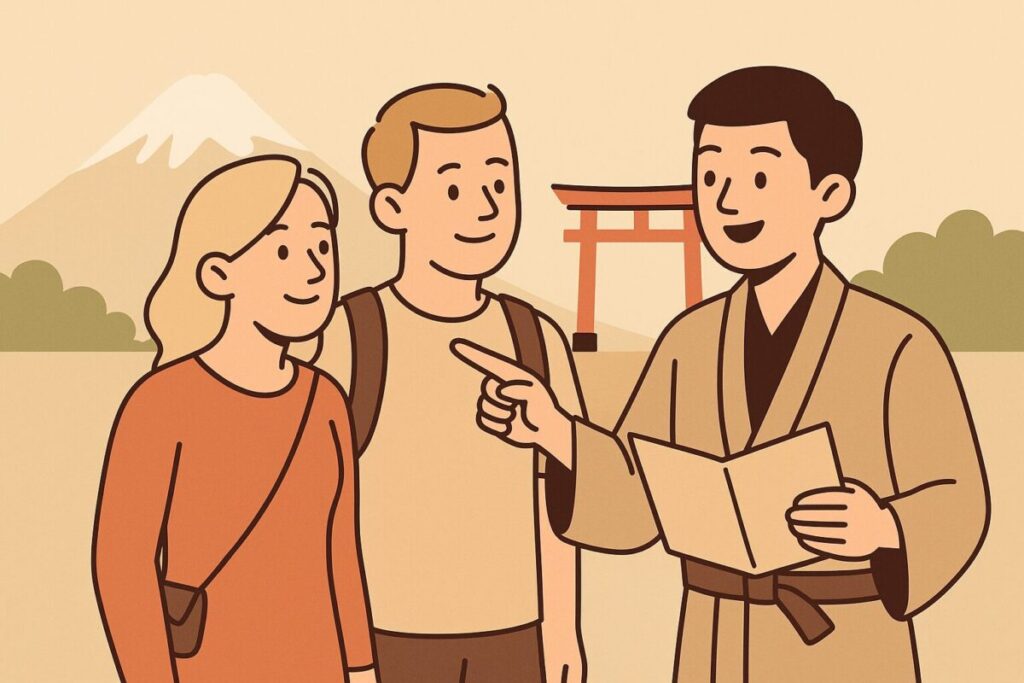

Want to go deeper than just sightseeing? A guided tour or cultural experience adds context, history, and fun.
Popular platforms:
- Viator
- GetYourGuide
Experiences worth booking:
- Tea ceremony or kimono experience in Kyoto
- Sushi-making class in Tokyo
- Hiroshima Peace Memorial Park guided tour
- Early-morning temple walks with local guides
Why it’s worth it:
You get expert insight, avoid tourist missteps, and often skip long lines. Plus, someone else handles logistics.



I’ve done the tea ceremony twice. Once solo and once with a guide. The second time was way more meaningful.
Travel Insurance
It’s not glamorous, but travel insurance is something you’ll be grateful for if anything goes sideways.
Trusted providers:
- World Nomads
- SafetyWing
- Allianz
- Trawick / Faye (for digital nomads or U.S. residents)
Coverage usually includes:
- Medical emergencies
- Trip delays/cancellations
- Lost or stolen luggage
- Emergency evacuation



It’s peace of mind for the price of a sushi dinner. Worth every yen.
Get Japan travel insurance with SafetyWing – easy, affordable, and covers medical emergencies
Where to Book Accommodations
I recommend using trusted platforms like:
- Booking.com – Best for hotel variety and flexible cancellations
- Trip.com – My go-to platform for booking hotels, Shinkansen tickets, and tours in one place. Great for Japan travelers.
- Airbnb – Great for longer stays or unique homes (but check legality)
Look for places near train stations for easier access. And if you can…
Stay in a Ryokan (Traditional Inn)
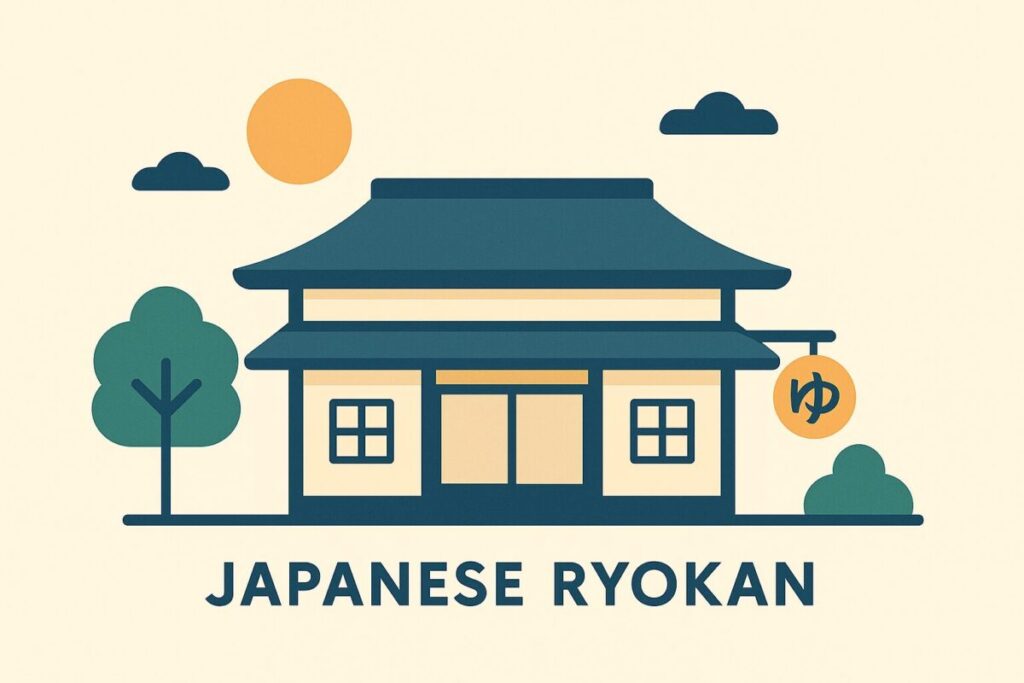

Spending a night in a ryokan is a cultural highlight:
- Sleep on futons over tatami mats
- Bathe in a natural hot spring (onsen)
- Enjoy a full-course kaiseki dinner
They range from modest to luxury, and fill up fast, so book early.
旅館は本当におすすめだけど、混む。いいところはすぐ埋まる。あと、布団寝ずらいかも。あと浴衣で寝ずらいかも。でもいい体験になるはず。



Even just one night in a ryokan changes how you see Japan. The hospitality is unforgettable.
Other Essentials to Consider
Here are a few other helpful services and products worth arranging:
- Type A/B power adapter – essential for non-North American plugs
- Luggage forwarding (takkyubin) – ship your bags ahead so you travel hands-free
- IC card (Suica/Pasmo) – for quick train/bus rides and shopping
- Rail & ride apps – like Japan Official Travel App or NAVITIME
- Foldable shopping bag – Japan encourages “manner bags” to carry trash or purchases



Luggage forwarding is a game-changer if you’re hopping between cities. Drop your suitcase at the hotel desk, and it magically appears at your next stop.


Final Tips
Planning your first trip to Japan takes a bit of effort—but it’s absolutely worth it. With the right prep, you’ll spend less time stressing and more time soaking up the magic.
Remember:
- Use Japan’s public transportation—it’s clean, efficient, and nearly always on time
- Carry some cash, especially for smaller shops, temples, and rural areas
- Be polite and observe local customs—bow lightly, speak quietly, and don’t tip
- Respect etiquette on trains, in temples, and at onsens
- Stay safe and insured—Japan is one of the safest countries, but travel insurance adds peace of mind
- Eat everything—from high-end sushi to ¥300 convenience store sandwiches, Japan is a culinary paradise



Don’t try to do it all. Let Japan unfold naturally, be curious, and leave space for surprises. That’s when the real magic happens.
Ready to Go?
With these travel tips in hand, you’re well on your way to a smooth, unforgettable experience in Japan. Now it’s time to make it real:
- Book your accommodations on trusted platforms like Booking.com or Agoda
- Reserve your Japan Rail Pass in advance through a reliable seller
- Rent pocket Wi-Fi or grab a SIM so you’re never offline
- Join a local cultural tour for deeper experiences—tea ceremony, sushi-making, or guided temple walks
- Consider travel insurance from a reputable provider like World Nomads or SafetyWing
Your Japanese adventure is waiting. Plan smart, pack light, and go explore.
Book your essentials now and make your trip to Japan not just easy—but unforgettable.
✈️ Get everything sorted before you land:
- Trip.com – Book hotels, Shinkansen, and activities
- JR Pass – Buy now on Klook
- Pocket Wi-Fi or SIM – delivered to your hotel or picked up at the airport
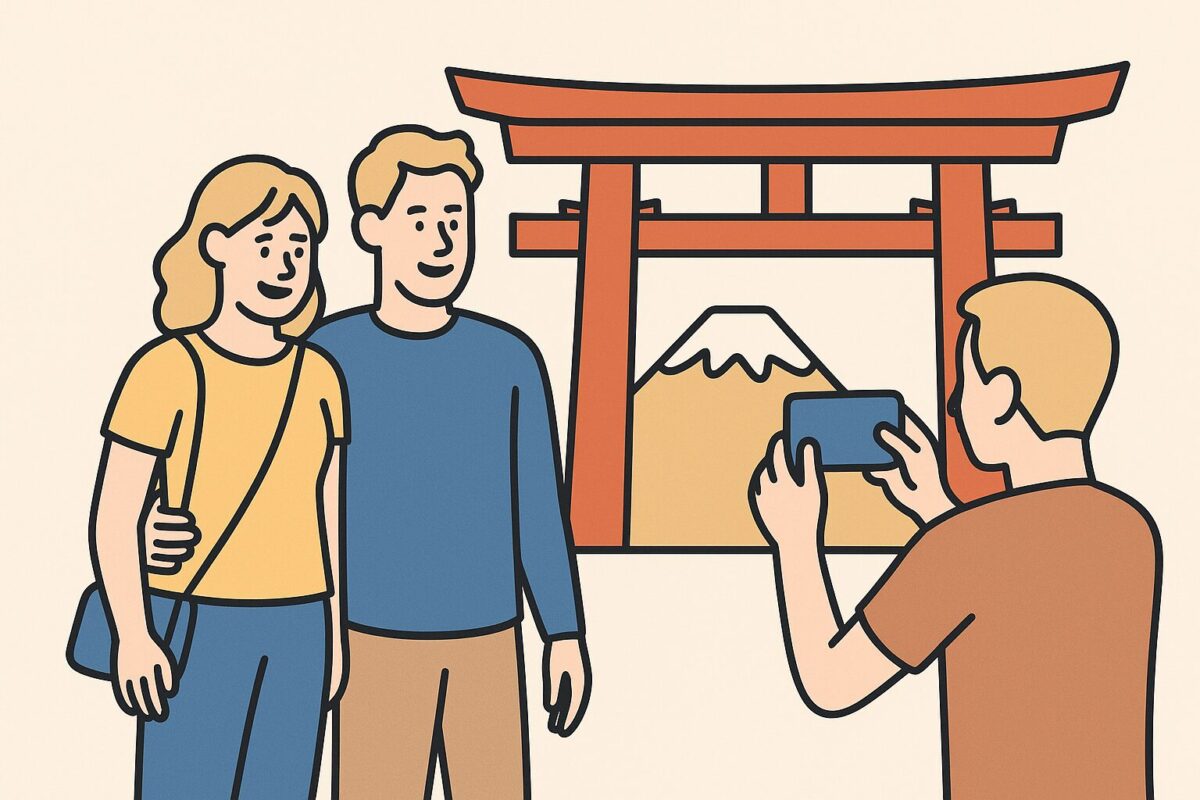






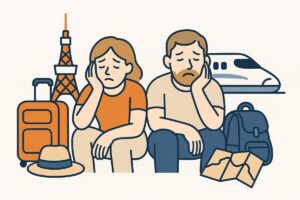
Comments